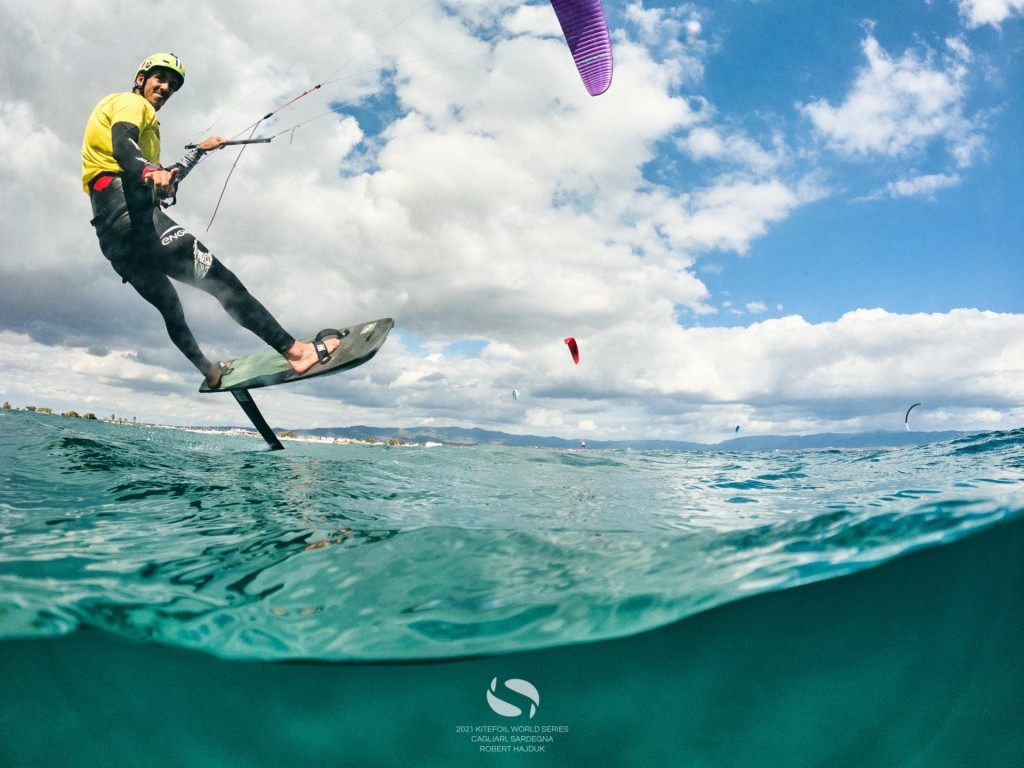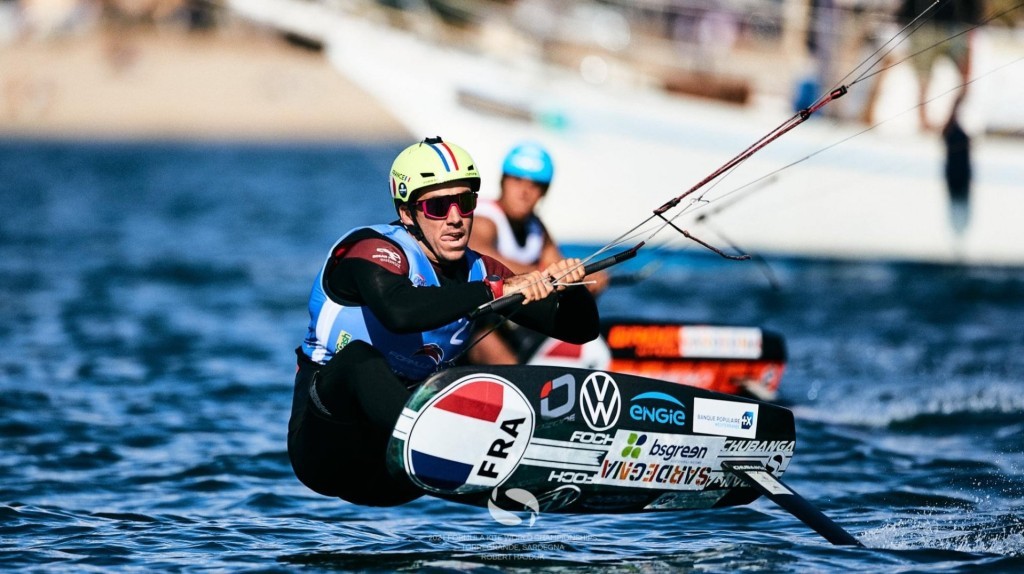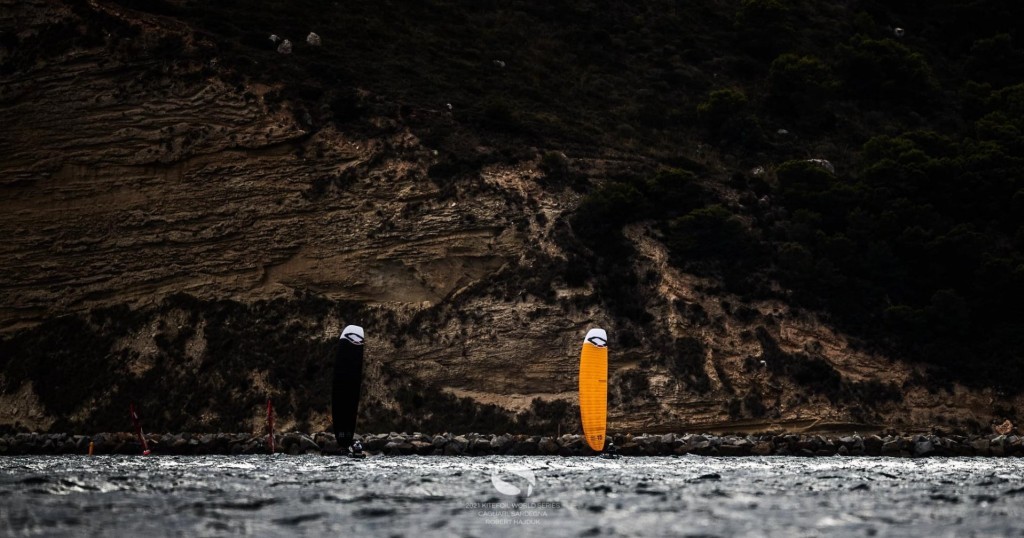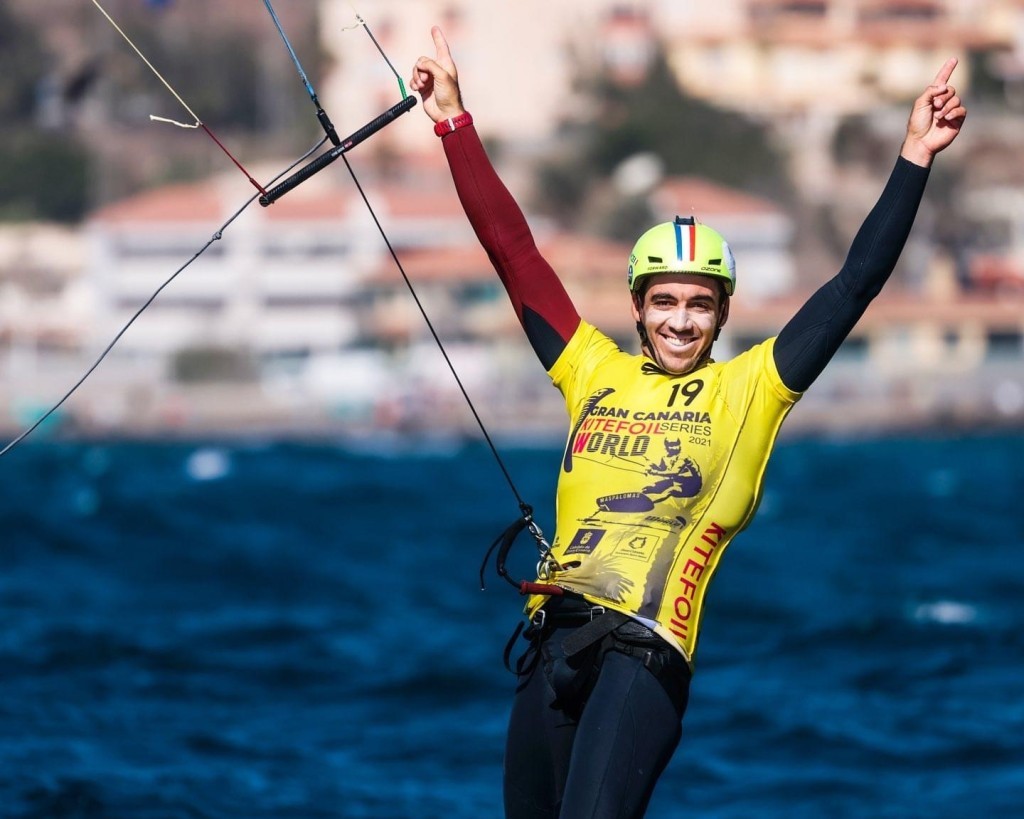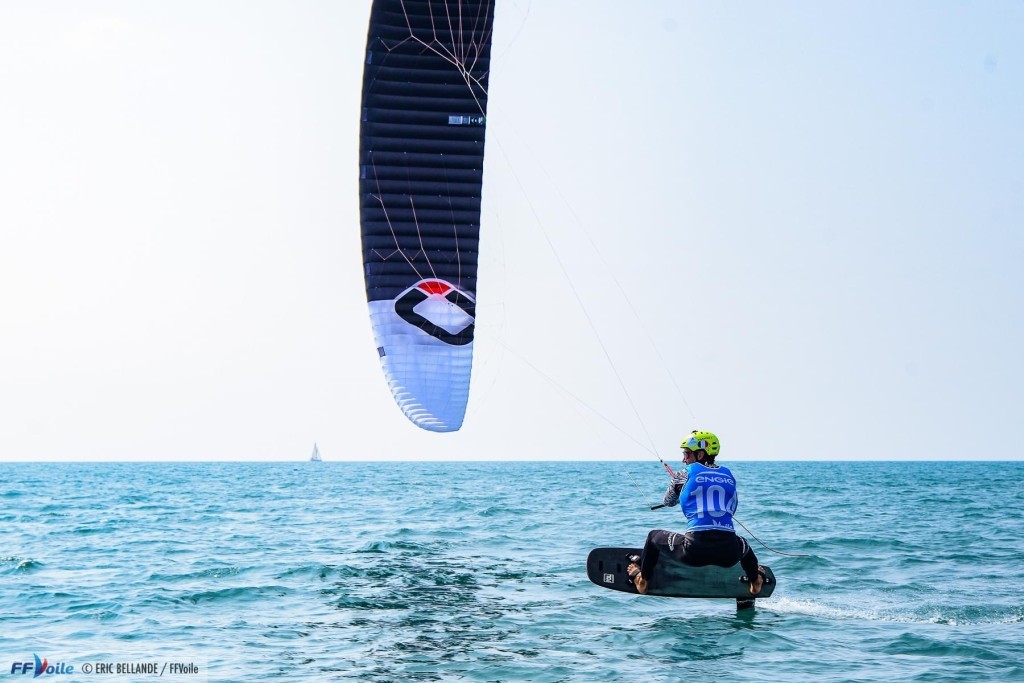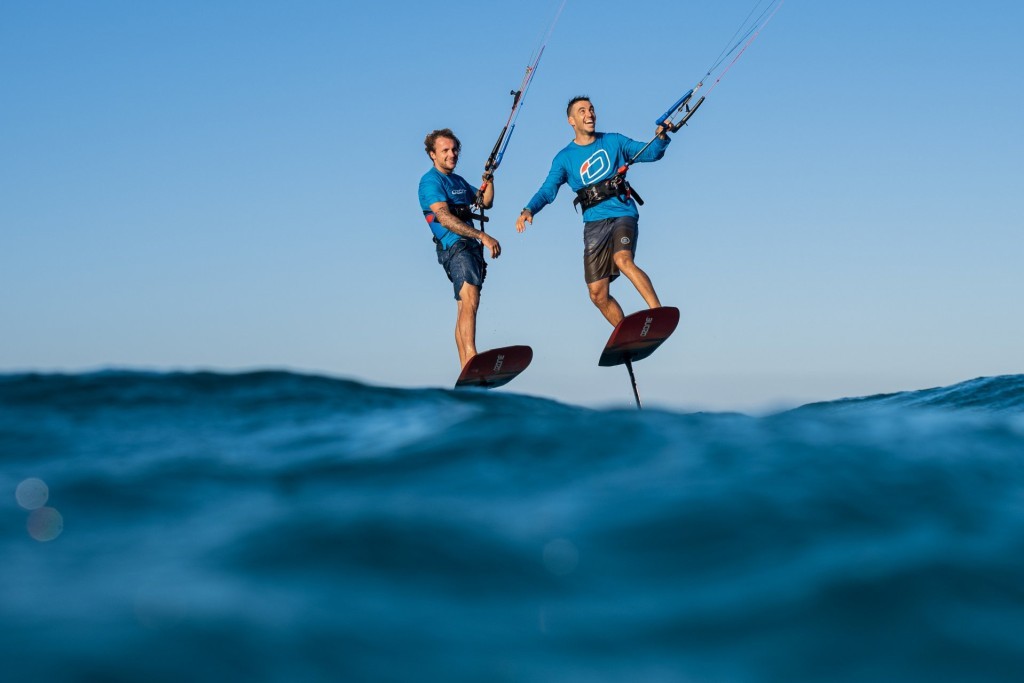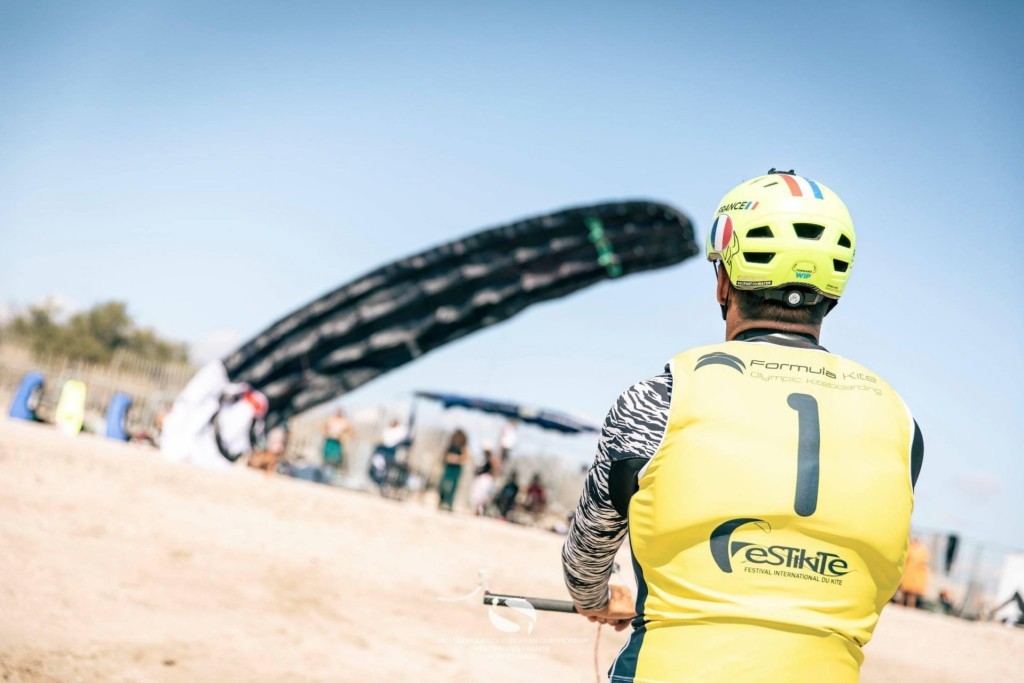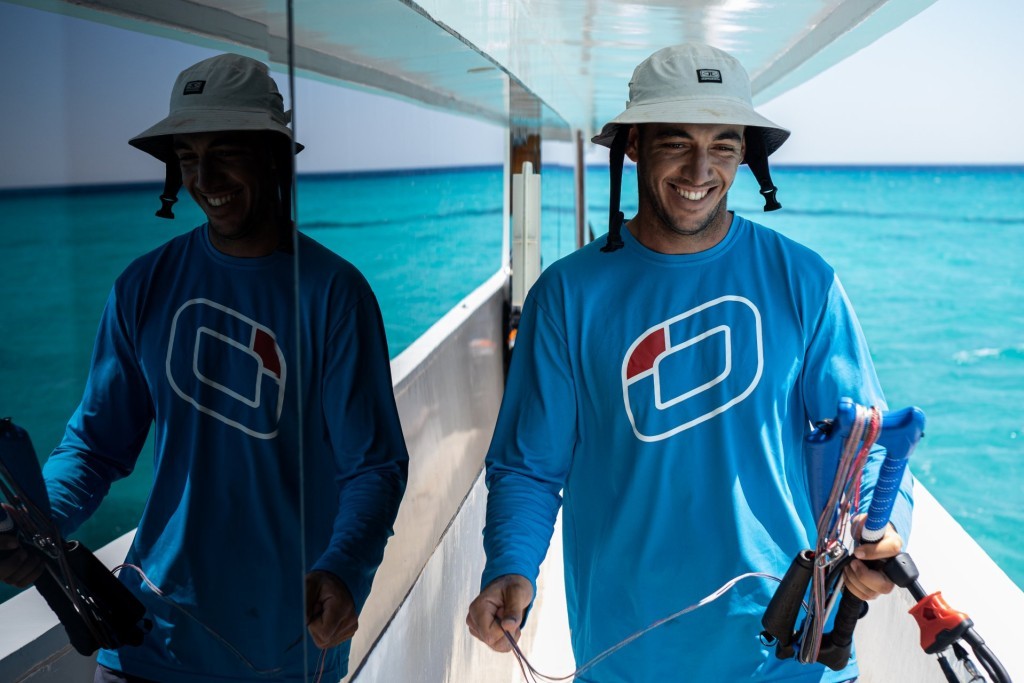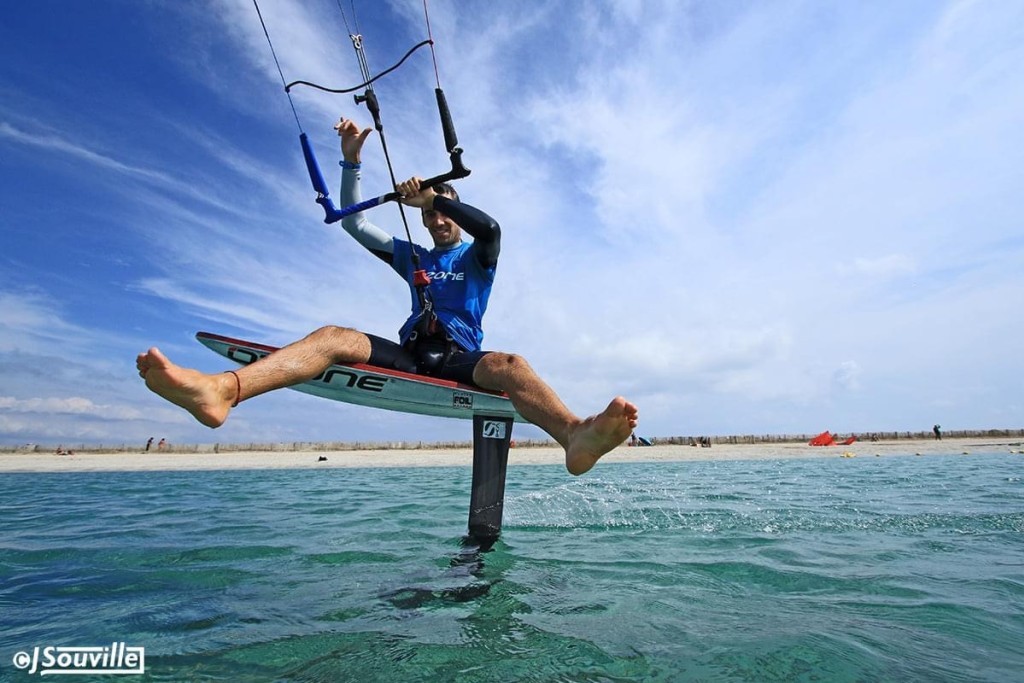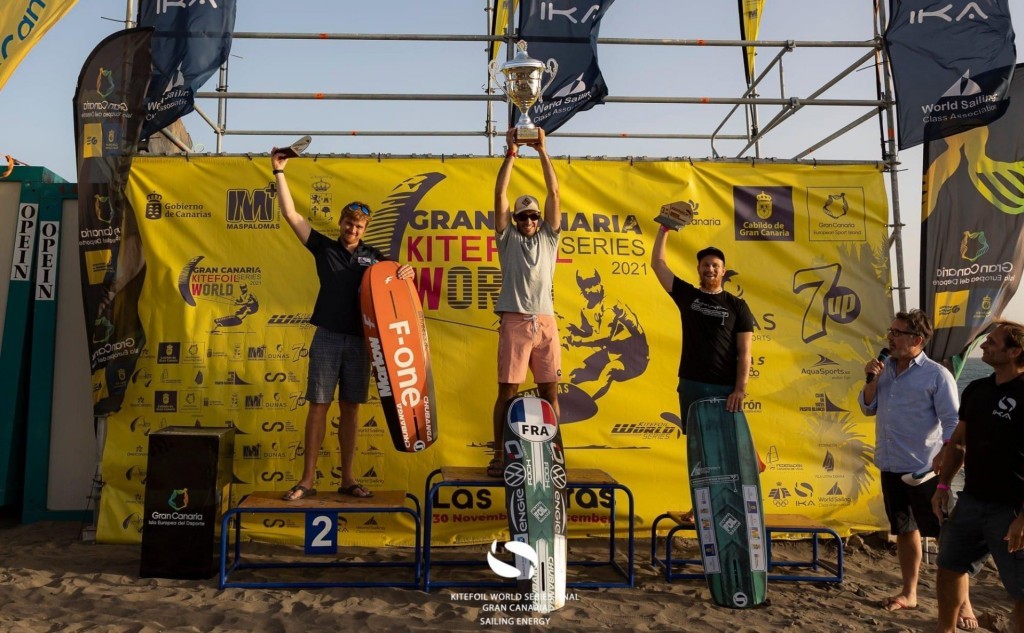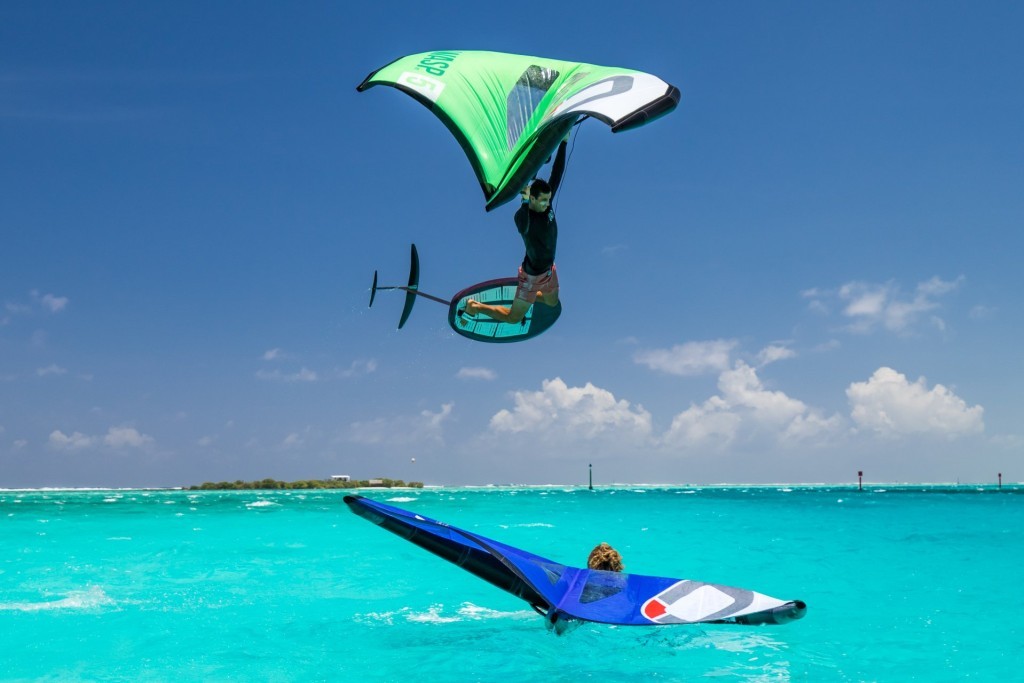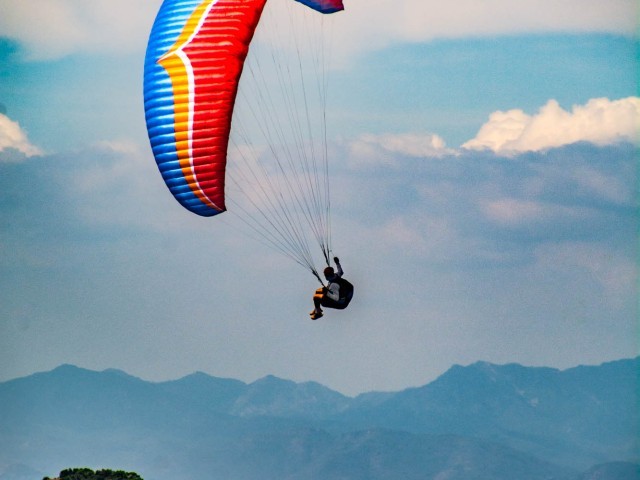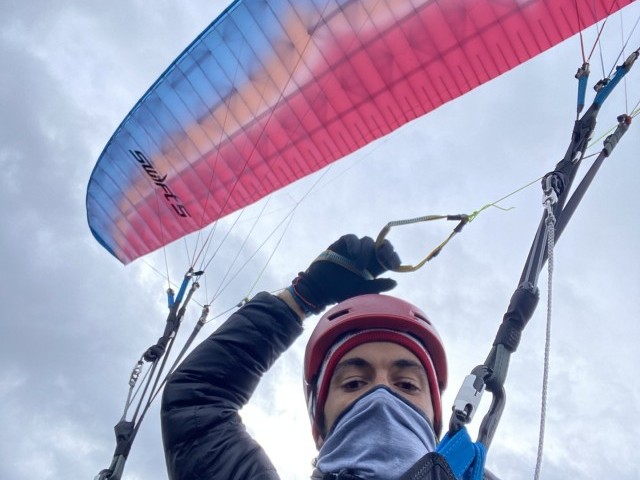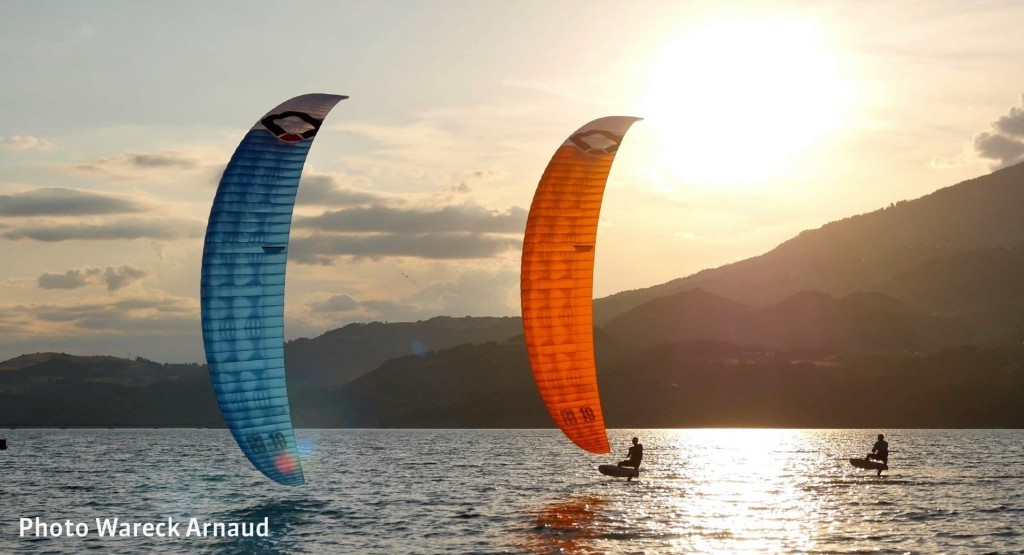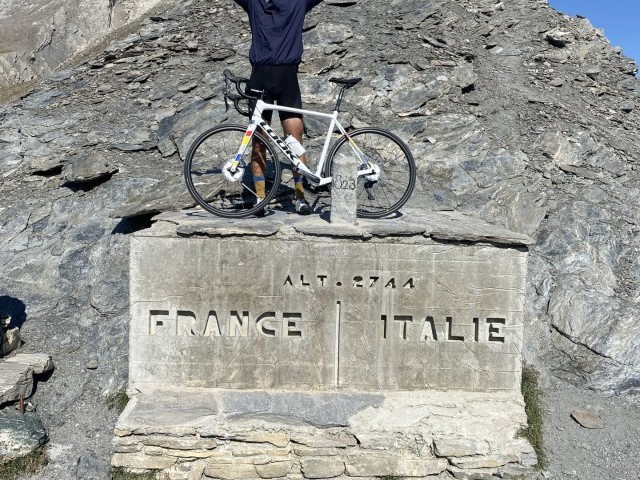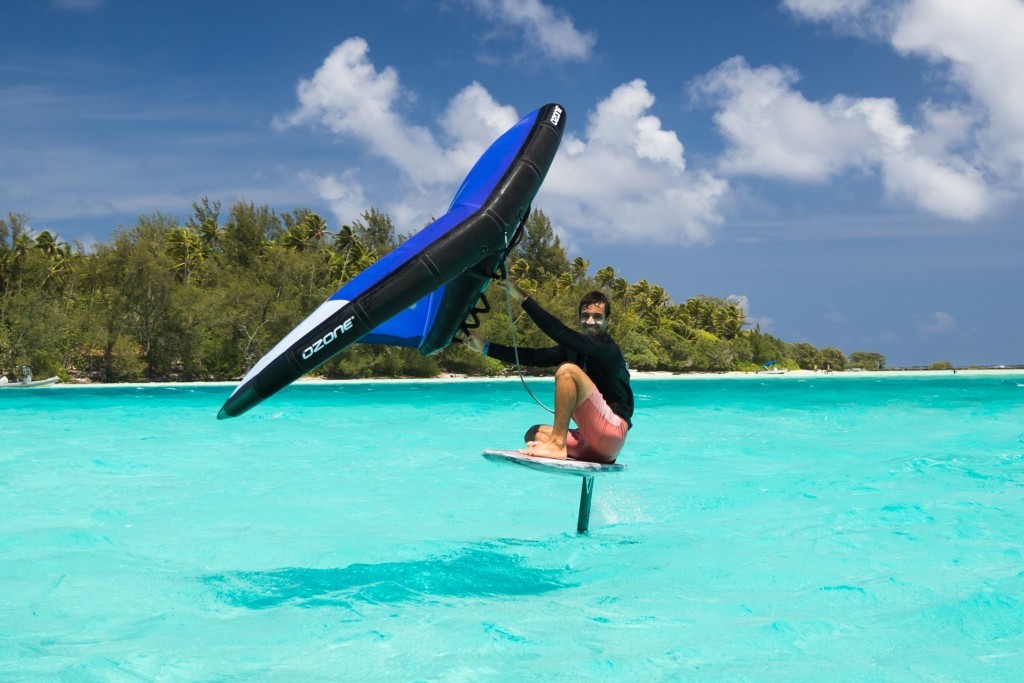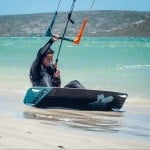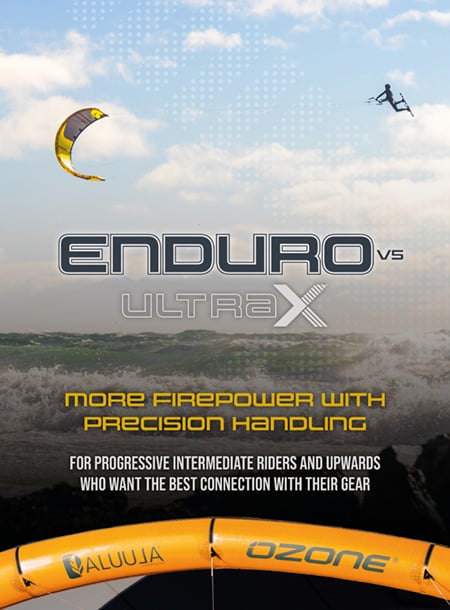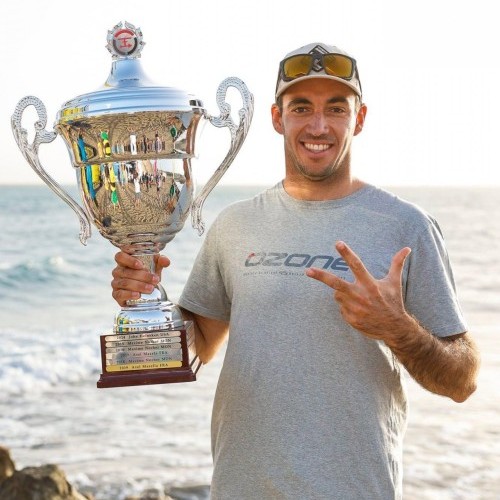
Off to the races with Axel Mazella!
Features / Fri 4th Feb, 2022 @ 12:00 pm
French kitefoil racer and Ozone team rider Axel Mazella just had a stellar 2021 season, winning the KiteFoil World Series and the Formula Kite European title, both for the third time. The 24-year-old was also just pipped into second place for the coveted Formula Kite World Championship crown by French team-mate Théo de Ramecourt. On a two-month winter break to the south Pacific island of Tahiti, French Polynesia, to rest and recharge, Mazella is travelling with close friend De Ramecourt and another French racer, Theo Lhostis, who grew up and has family there. Mazella took time out to talk to Ian MacKinnon about his coming year, the building pressure of the Paris 2024 Olympics, and what he does to switch off.
Question: 2021 was a big year for you, winning the KiteFoil World Series, the Formula Kite Europeans, and taking the second podium step at the Formula Kite Worlds. Which are you most pleased about?
Axel Mazella: I’m super-happy about my season. It’s my best season so far. I never did that before, winning the KFWS and finishing second at the Worlds. For me, it was a big accomplishment. There was a lot of work beforehand to prepare for all the events. Now, also, kitefoil racing is bigger and bigger and so tight. It’s not like it was at the beginning of the sport where you could win all the races at an event. It’s become like a real sailing sport: you can finish one race first, then fifth, then tenth. So it’s really intense. I can’t complain about my results, because in all the events this year I made the podium. So it’s definitely my best season of racing. I’m super-happy.
Now I know what I have to work on for the next year. I have a lot of strong guys in front of me, like Théo de Ramecourt, first and foremost. But we are great friends too, that’s why we’re travelling together and spent a lot of the year together. But still, I know what I have to work on for the coming 2022 season. Trying to win the Formula Kite World Championship is the top priority because it’s the only one I haven’t won so far.
Q: The results you got last year, were any particularly difficult or do any stand out particularly?
AM: Some were difficult. I didn’t win the European championship outright because Maximillian Maeder [Singapore] was on fire on the last day, winning the final three races to take the Open European title. So that was tough.
The Worlds were intense too. The whole regatta was difficult as they were not really my conditions. The wind was super-strong and gusty and shifty. Not my favoured conditions. From the first day when I saw the forecast, I thought it was going to be super-hard, but that I would try to do my best. I knew, too, they were the conditions for De Ramecourt and the Flysurfer [kites] guys. It was really tight, and I put all my effort and power into the event. It’s the World Championships and the most important event of the year.
Q: How did 2021 compare to previous seasons?
AM: It’s difficult to compare it with previous seasons. We had Covid in 2020, so we only had the Europeans with everyone on brand new [Olympic registered] gear. The kites just came from the factories. So it was a championship with everyone not really racing during the event. New kites and new foils. Everyone went to that event just to compare themselves because no one knew which kites or foils were best, so it was strange. Some guys chose the wrong kites sizes, foils, and everything. So, it was like a testing ground.
The 2019 season was a good one for me too. But if I have to compare previous seasons with 2021, I’d say this was my best. Even if I didn’t have my best results in the rankings, the level is so much higher now. I also worked on my mental state and grew up a lot, so I have some good tools for the coming year.
Q: After winning the finale of the World Series, you described the Ozone R1 V4 as the “best kite ever”. What was your role in helping design and test the R1 V4?
AM: I came into Ozone in late 2019 after Nico Parlier and Riccardo Leccese developed the R1V3. I came to help with the testing and development of the R1 V4 after Leccese left, and Nico Parlier was alone, and he wanted someone to join him. Nico Parlier and I are really good friends, really close, and it was logical to do this work together. So I became a tester, giving my opinion on the kites’ performance with Nico Parlier, on the water and the racecourse. But Nico had the biggest input on how to go with development. I was just trying to help him, along with the designers, Rob Whittall and Dominik Zimmermann. Previously, I was with F-One and Enata and did a lot of development work. But when you enter a new brand, there is already a way of doing things. They already have their ideology about the way the kite should be. So, in this case, I was more learning and giving my opinion.
Q: How did you go about the testing?
AM: We did some testing altogether, with Nico, Rob and Dom. They managed that twice, once right after the World Beach Games in Qatar when we worked on the big sizes. The second time was in Egypt, though I was not there. The other times Nico and I tested prototypes together, and sometimes with Dominik because he lives in Switzerland, and it was easy for us to get together. When we had a lot of different sizes and prototypes to test, we had a big session, working all together for a couple of weeks.
Q: Ozone went through many prototypes to come up with the R1 V4. Rob Whittall remembers 15 versions over 18 months. What do you recall?
AM: “For sure, we tried many different things. On the V4, we have three rows of bridles, A, B and C, and the brake lines. But we also tried to do like Flysurfer, with two rows of bridles. We had two different projects. But in the end, we kept the set-up like the V3 because the main thing was to have a kite with performance, which is accessible. That’s why we preferred to stay with a kite that’s easy to use, that has three rows of bridles, so it’s comfortable in all conditions. For sure, for me, it’s the best kite ever. It’s the best performing kite on the racecourse, for me. Perhaps not fastest upwind, but definitely fastest downwind and easiest to use in general.
If you compare it to the other kites, we went in a completely different direction from Flysurfer and Flymaax, which are radically different. But, at the end, we all end up in the same place on the finish line, even though we have different angles and different speeds and placements around the course.
Q: What are your goals for the 2022 season?
AM: That’s easy: a European title, the fourth in a row. But most of all, to win the Formula Kite World Championship because it’s the biggest event of the season for everyone, especially the French sailing federation [FFV]. We have to have good results to get support from the federation. It’s the most important event for everyone, so we really have to be ready. I will mostly focus on the Europeans and the Worlds this year and go to the World Series events if they’re not too close to others.
Q: What will you do to achieve those goals?
AM: I have to say that the federation more and more supports us, and it will be like this for the coming years. The closer we get to the Olympics, the more the federation will push us forward. So I will be part of the training with the French team, which is a real advantage for us because the French team is really strong with De Ramecourt, Benoît Gomez, Nico Parlier and Maxime Nocher. We grew up together and share our knowledge. So for 2022, I will be with the French team most of the time. Sometimes I have to train alone. Actually, before events, I like to go on the water alone and trust my feelings to find the best settings on my kites and foils. I live in the south of France on the coast at Toulon and train at Hyères, usually with the French team.
Q: Now, in 2022, we’re just two-and-a-half years from the Paris 2024 Olympics and kitefoil racing’s debut. Does being a home Games put even more pressure on you?
AM: No doubt, and it will come round very quickly. In 2022 we will start to have qualifiers for the Olympics. We start to have more and more pressure from the federation. We already have a lot of support, but they expect good results from us from the Games because it’s our home Olympics, and the French government wants a lot of medals in 2024. Yes, it’s more pressure, especially for me because the sailing events will be in Marseille, which is a one-hour drive from my home. If I participate in these Olympics, I will have all my family and friends supporting me, which is super-good for motivation. But playing at home, you have to stay really focused on what you have to do and not crack under pressure.
Q: In Tahiti, you’ve been doing some wingfoiling. Have you been doing that long? What do you like about it?
AM: I really love wingfoiling for having fun. Kitefoiling takes a lot of my time and is a big part of my life, especially for the coming years. But I like wingfoiling for having fun when the wind is strong, at my home spot and everywhere in the world where there are waves. It’s a great tool for riding waves. I really, really love to spend time on this sport, because with a foil you can do whatever you want. You can race, you can surf, you can do freestyle.
I already spent a lot of time with Ozone on the wing project during the last winter. I really enjoyed working with Rob and Dom developing this project [WaspV2]. It was really interesting and a completely different process to working on the foil kites. I’ll definitely continue riding the wing. It’s really good to do something different from kitefoiling to keep my mind fresh.
It’s like paragliding for me. When I spend too much time on the water, I really love to go into the mountains and change the environment. It’s good for me to play different sports.
Q: When did you learn to paraglide?
AM: That’s a good story. We learned altogether, Théo de Ramecourt and Theo Lhostis and me, two years ago in the Alps. We learned altogether and did the same courses in a school. We bought our equipment together and we still to fly together. We brought our paragliders, and we’re flying together here in Tahiti. Now a lot of the French team are flying too, so it’s really cool.
Q: Which Ozone paraglider do you fly?
AM: I fly an Ozone Swift, which is not a beginner wing. It’s a combo between easy-to-use and performance. We already knew how the wing worked from kitefoiling, so we learned really fast about how to fly the paraglider. The Ozone guys told me I could get something a little more advanced.
Q: What attracted you to paragliding? The wing and its similarities to foil kite?
AM: Yes. That’s why we learned so fast. The paraglider and the foil kite are pretty similar. It’s the same technology, the same fabric, the same bridle lines: A, B, C and brake. But on water, we are sailing in two dimensions—in the air, it’s three.
Q: What’s exciting about flying?
AM: On my first flights, it was amazing to be free in the air. The feeling was so crazy to be in the air just under a tissue. You look down 1000 metres under your feet. It was pretty scary at first. Then when I was confident with flight, I really enjoyed it. It’s so great, the feeling of growing into a sport and growing so fast, learning some new skills and gaining some new knowledge. Paragliding also gave me some skills for piloting my foil kites when the wind is gusty. When the conditions on the water are really tricky, I found the experience from paragliding really useful because, in the air, we’re often in gusty, shifty winds.
To stay up and get higher, we use thermal winds. When you enter the thermal, it’s like riding in super-gusty and super-shifty conditions every time, so you have to keep your wing above your head to keep flying well.
Q: You do some cycling too. To keep fit?
AM: Nico Parlier was one of the first guys in the French team to start cycling. The federation [FFV] gave us a good deal for some bikes. I bought one to try it. It’s a great workout for kitefoiling to build strong legs. As I said, I really enjoy it when I’m doing different sports. I spend hours and hours on the bicycle. In my home area, I can go out up some hills and have great views. So it’s a great way to have a workout in nature, which is way better than the gym. I know we’ve got to spend some time in the gym. But I prefer to work out outside, with some friends. I really love cycling with Nico Parlier and Benoît Gomez. Next year, we’re going to get a group together among all the French sailors, from the 49ers and Lasers who are into cycling, to go out together.
Q: How do you switch off and recharge for the challenges ahead?
AM: That’s what I’m doing here, right now in Tahiti. It’s really important for me in the wintertime to do something other than kitefoiling. For two reasons: by the end of the season, we are super-tired, not bored, but there are many races during the season, and I know I have to do something different because my body has to be ready for next year. Also, I need this time to rebuild my mind for the new plan and get more motivation. Even during the season, I have to take some time to rest, especially before a big event. I really enjoy spending time with my family. We’re always travelling the world so much, so it’s good to get time to see them. So I go to my family house and enjoy spending time with my cousins, parents, grandparents, and brothers. And if I’ve got the conditions for flying, I’ll go flying. And surfing too, if the conditions are right. I really love surfing.
Interview by Ian MacKinnon
By Crystal Veness
Editor at IKSURFMAG, Crystal Veness hails from Canada but is based in South Africa. When she isn't busy kitesurfing or reporting on the latest industry news for the mag, she is kicking back somewhere at a windy kite beach or working on creative media projects.


